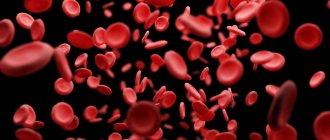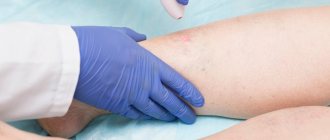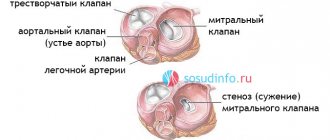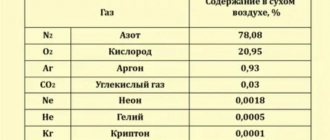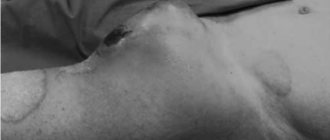The history of the appearance of the miniphlebectomy method
The technique was developed by Swiss dermatologist Robert Muller in the 50s of the 20th century as an alternative to stripping and sclerotherapy. After ten years of practical application, the method was presented to the general medical community. In subsequent years, the miniphlebectomy technique began to be used by leading specialists around the world, and subsequently became widespread. A German doctor of Hungarian origin, Zoltan Varadi, modified the technique and gave it a new vector of development.
Miniphlebectomy hooks developed by Professor Varadi
Despite the fact that the history of the method goes back decades in public medicine, unfortunately, many doctors often have not even heard of it.
Indications for miniphlebectomy at the innovative phlebological center in Moscow
Before any interventions, according to the best European standards, patients at the innovative phlebological center in Moscow undergo a mandatory ultrasound scan. This study identifies areas of the venous system with blood reflux. Often these segments are slightly expanded and are not always determined by inspection and palpation alone. But their very presence in the venous system carries the threat of developing complications such as thrombophlebitis, the appearance of symptoms of venous insufficiency (edema, eczema, ulcers, etc.). These veins must be removed in one way or another. In fact, all incompetent veins located in the subcutaneous tissue can be subjected to modern miniphlebectomy.
Mandatory ultrasound examination before miniphlebectomy according to Varadi
And for pronounced varixes that disfigure the legs, miniphlebectomy is the best solution. The following indications for this operation can be distinguished:
- The presence of subcutaneous varicose veins. As a rule, these are suprafascial areas of the great and small saphenous veins and their tributaries.
- Recurrent thrombophlebitis. Most often, these saphenous veins are significantly dilated, tortuous, localized close to the surface of the skin, and the use of miniphlebectomy to remove them is a good alternative to classical surgery.
- Bleeding from venous nodes. These veins are located under the very surface of the skin and the use of other methods for their removal, as a rule, loses in the cosmetic value of the treatment result.
- The presence of varicose dilated tributaries of the great and small saphenous veins with the consistency of the valves of the latter. In this case, an isolated miniphlebectomy of these tributaries is performed.
11.3. Miniphlebectomy.
The development of miniphlebectomy techniques according to R. Muller in recent decades has significantly expanded the scope of outpatient phlebological care for patients. It has become possible to remove individual segmentally dilated veins with a cosmetic effect approaching that of sclerotherapeutic effects. This is achieved by puncturing the skin with an 18 - 20 G injection needle with a diameter of 1-2 mm.
The skin is punctured with a pointed scalpel with a triangular blade in the projection of the marked vein. Then, using a phlebextractor (Müller, Esch phlebectomy hooks), a section of the vein is removed through the wound and crossed between mosquito-type clamps (Fig. 3). By pulling the peripheral segment of the vein, the location of the next puncture is determined by retraction of the skin and palpation of the cord (tightened vein). After removing the section of the vein through the second puncture and crossing it, the section of the vein is removed. Most of the skin wounds during miniphlebectomy, as a rule, do not require suturing and after several months, postoperative skin scars are practically invisible.
The experience of performing more than 300 miniphlebectomies shows virtually no complications and a good cosmetic result. In our observations, hypertrophic scars developed in only 6% of cases.
| A | b |
| V | |
| Rice. 3. performing a miniphlebectomy using the Muller method (a – puncturing the skin with a pointed scalpel; b – vein extraction; c – the result of surgical treatment after 5 days. | |
Miniphlebectomy, despite its many advantages, also has a number of disadvantages. Thus, in connection with the implementation of small incisions, it becomes difficult to search and manipulate the veins, including the identification of communicating veins, errors in their visualization and dressing are common, and trauma to the edges of the skin incision increases, which can subsequently lead to the development of a hypertrophic scar. Remote manipulations without visual control often lead to separation of fragments of veins with the formation of hematomas, while leaving sections of veins could also serve as the basis for a relapse of the disease. This technique requires considerable time, a large number of incisions, and may be impossible due to trophic disorders or in the presence of large varixes. Also, visualization of the saphenous veins during surgery is most often carried out according to preoperative markings. Additional intraoperative imaging options are limited.
However, it should be noted that miniphlebectomy, which can be performed in outpatient centers, is the first surgical intervention for many patients. A timely miniphlebectomy proposed to the patient and performed, aimed at correcting the perforator shunt, allows not only to solve cosmetic aspects, but also to prevent further overload of the superficial venous system of the lower extremities, and, as a result, the progression of varicose veins.
The miniphlebectomy technique was certainly a big step in surgical phlebology, both in the direction of cosmetics and in terms of expanding the capabilities of the phlebologist surgeon. The use of this technique also makes it possible to significantly expand the scope of surgical intervention.
In conclusion, it should be noted that diseases of the veins of the lower extremities are multifactorial in nature, in the treatment of which it is necessary to take into account all the subtle aspects of hemodynamic correction. A one-sided approach is not applicable in their treatment; only an integrated approach will contribute to success. It is necessary to make full use of the entire arsenal of surgical and conservative means, and treatment should be staged. With this formulation of the issue, outpatient phlebological care is given almost the most important place. Much more than it seems at first glance depends on correct and timely diagnosis, adequate treatment, and qualified postoperative management. Rational inclusion of all these measures in the treatment program will significantly improve, first of all, the quality of life of a patient with any form of manifestation of pathology of the veins of the lower extremities.
Literature.
1. Varicose veins. Compression sclerotherapy. Collection of works. M.: Publishing house NTsSSKh im. A.N. Bakuleva RAMS, 1999. – 100 p.
2. Yablokov E.G., Kirienko A.I., Bogachev V.Yu. Chronic venous insufficiency. – M.: Publishing house “Bereg”, 1999. – 128 p.
3. Stoyko Yu.M., Lytkin M.I., Shaydakov E.V. Venous hypertension in the vena cava system. St. Petersburg, 2002. – 276 p.
4. Kirienko A.I., Bogachev V.Yu., Zolotukhin I.A. Compression sclerotherapy (a practical guide for doctors / Edited by Academician of the Russian Academy of Sciences and the Russian Academy of Medical Sciences V.S. Savelyev. - M.: Publishing House of the A.N. Bakulev Scientific Center for Cardiovascular Surgery of the Russian Academy of Medical Sciences. - 2004. - 40 p.
5. Phlebology: A Guide for Doctors / Savelyev V.S., Gologorsky V.A., Kirienko A.I. and others: Ed. V.S. Savelyeva. – M.: Medicine, 2001. – 664 p.
6. Muller R. La phlebectomie ambulatoire // Phlebologie. – 1978. – Vol. 3. – P. 272-278.
Contraindications for miniphlebectomy according to Varadi
There are not many contraindications for miniphlebectomy. Among them are the following:
- The presence of dermatitis, cellulitis or infection in the area of intervention. It is first necessary to sanitize the inflammatory focus, and then perform surgery.
- Significant venous or lymphatic edema can contribute to the development of inflammatory phenomena. It is advisable to eliminate or reduce it before surgery.
- Pronounced trophic changes in the area of intervention. If there is a focus of lipodermatosclerosis or a trophic ulcer in the surgical area, it is better to give preference to compression sclerotherapy.
- The presence of a severe general somatic disease. The intervention is possible only after stabilization of the underlying disease.
In what cases is it used?
Varicose veins can appear after pregnancy, due to lack of physical activity and for a number of other reasons, leading to vascular damage. Regardless of what led to the onset of the disease, miniphlebectomy is prescribed if the patient experiences the following disturbances in the functioning of the venous system:
- The appearance of dilated veins, as well as the formation of nodes.
- Developing thrombosis (may affect the venous valve).
- In cases where it becomes necessary to remove a superficial vessel of small diameter (no more than 1 cm).
This technique is used as an independent procedure or in combination with other methods of surgical intervention. Most often, miniphlebectomy is accompanied by sclerotherapy, as well as laser coagulation and other types of procedures. Supplementation is necessary when the patient has serious disorders (presence of thrombophlebitis, etc.).
Miniphlebectomy as an independent method is used only in cases of the initial development of varicose veins, when the patient does not experience serious disorders.
Preoperative examination in our center before miniphlebectomy
Modern miniphlebectomy requires a standard examination for outpatient surgery under local anesthesia.
- General blood analysis.
- General urine analysis.
- Blood type and Rh factor.
- Coagulogram (analysis of the blood coagulation system).
- Blood glucose level.
- RW – test for antibodies to the causative agent of syphilis.
- Test for HIV, hepatitis B and C.
- Electrocardiogram.
- Consultation with a therapist (to identify possible concomitant pathologies).
Preparatory process for the procedure
Miniphlebectomy is a fairly simple operation, but despite this, the patient should perform certain preparatory actions:
- Blood (general check).
- Fluorography of the chest area.
- Urine (provide the results of a general analysis).
- Blood testing for HIV, as well as the presence of syphilis, etc.
The specialist may prescribe additional tests, depending on the patient’s age category.
The duration of the operation is within 40 minutes. After miniphlebectomy, the patient is under the supervision of a specialist for about 2 hours.
In the next 24 hours after surgery, the person undergoing surgery needs to wear compression clothing or elastic bandages.
They should be worn almost around the clock, and a specialist should provide accurate information regarding the duration of use of these attributes. Compression is necessary to avoid serious problems after surgery, so wearing special clothing (stockings, tights) should not be ignored.
Miniphlebectomy procedure at a leading phlebological center in Moscow
Miniphlebectomy according to Varadi, performed by phlebologist A.A. Antipov.
Unlike public hospitals, specialists at the innovative phlebology center use the innovative and best miniphlebectomy technique to date, which meets high European standards.
What if you can’t, but really want to?
Numerous positive reviews from people who have undergone Varadi miniphlebectomy significantly increase the number of “absentee” patients. But no matter how accessible medical information is, the doctor must decide on the choice of treatment method for your varicose veins. Although there are few contraindications to the Varadi operation, they do exist :
- Severe arterial hypertension.
- Trophic skin disorders.
- Any acute inflammation.
- IBS.
- Decompensated diabetes mellitus.
- Pregnancy, lactation.
Stages of modern miniphlebectomy according to Varadi
- Anesthesia. Before the procedure, local tumescent anesthesia of the skin and subcutaneous tissue is performed using a special pump that injects an anesthetic solution into the tissue around the vein. A solution developed by Dr. Jeff Klein is used, which uses low concentrations of anesthetics, which allows for the use of a larger volume of drugs. This makes the anesthesia process not only effective, but also as safe as possible.
- Vein removal. The veins are removed by experienced clinic specialists through small punctures of the skin using special innovative hooks. This helps keep surgical trauma to a minimum.
- Bandaging and compression. Skin punctures are covered with sterile aseptic dressings and specially selected modern compression hosiery is worn.
Stages of miniphlebectomy according to Varadi
Miniphlebectomy - fast, painless, beautiful
The operation itself, phlebectomy for varicose veins, has been used by surgeons and phlebologists for a very long time. Classic vein removal is impossible without general anesthesia and a long rehabilitation period. An alternative to traditional surgery was the invention of Dr. Zoltan Varadi - miniphlebectomy of varicose veins. The specialists of the Baltic Vein Clinic have mastered the method to perfection and successfully apply it.
Recommendations after the procedure - miniphlebectomy according to Varadi
The procedure is completely outpatient, and the patient can leave the clinic half an hour after it. After the intervention, the patient is recommended to walk for 10 minutes.
Walking after a miniphlebectomy in Varadi
He comes for a follow-up examination and dressing the next day. Postoperative wounds are small enough and heal quickly, so dressings are used for only 2-3 days. Continuous graduated compression is necessary for 2 days, then the patient uses it for 2 to 4 weeks only during the daytime.
Advantages over standard phlebectomy:
| Miniphlebectomy | Standard phlebectomy |
| Outpatient | Hospital stay for 5-7 days |
| No sick leave required | Sick leave for 7-14 days |
| Local anesthesia | Anesthesia or spinal anesthesia |
| Punctures on the skin 2-3 mm | Cuts on the skin |
| The pain syndrome is not expressed. Painkillers are most often not needed | Severe pain syndrome. Painkillers are required in the postoperative period |
| No scars remain on the skin | Scars remain on the skin |
| You can shower for 4-5 days | You should not shower until the stitches are removed (about 10 days) |
| Can go about daily activities | Activity Limit |
Miniphlebectomy according to Varadi - price of the procedure in Moscow
The cost of treating varicose veins using the miniphlebectomy technique in our Moscow center includes: local anesthesia, disposable consumables for the procedure, the procedure itself - miniphlebectomy according to Varadi, postoperative examinations with ultrasound and dressings, annual observation with ultrasound control (guarantee of the quality of treatment!).
| Service | Price (cost) of the service |
| Miniphlebectomy according to Varadi on one lower limb – I category of complexity | 5000 rubles |
| Miniphlebectomy according to Varadi on one lower limb – II category of complexity | 10,000 rubles |
| Miniphlebectomy according to Varadi on one lower limb – III category of complexity | 15,000 rubles |
| Isolated miniphlebectomy according to Varadi on one lower limb | 20,000 rubles |
Cost of miniphlebectomy surgery
The price depends on the level of neglect of varicose veins, as well as on the number of operated limbs. The approximate cost of the procedure can be found in the table below.
| A country | Cost of service\rub. |
| Russia | from 8,000 rub. and up to 34000 |
| Belarus | from 5,000,000 BYN rub. |
| Ukraine | from 3500 to 8000 thousand UAH. |
Advantages of miniphlebectomy at the Moscow innovative phlebology center “SCIF”
- Removal of varicose veins. Using this technique, the target veins are completely removed from the body.
- Low morbidity. A competently performed procedure by leading specialists using innovative technologies guarantees the absence of any complications.
- Outpatient procedure. Modern miniphlebectomy is an outpatient procedure that does not require hospitalization or anesthesia.
- Cosmetic. Considering that the surgical punctures are small in size and point-shaped, a very good cosmetic effect is achieved.
In the public sector of medicine it is quite difficult to find a doctor who knows the miniphlebectomy technique. But residents of Moscow and the Moscow region have a good opportunity to treat varicose veins using one of the best innovative techniques in modern phlebology - miniphlebectomy in an innovative phlebological clinic.


